Researchers devise groundbreaking new methods to create and duplicate single-atom transistors for quantum computers.



Harun Šiljak, Trinity College Dublin
Google reported a remarkable breakthrough towards the end of 2019. The company claimed to have achieved something called quantum supremacy, using a new type of “quantum” computer to perform a benchmark test in 200 seconds. This was in stark contrast to the 10,000 years that would supposedly have been needed by a state-of-the-art conventional supercomputer to complete the same test.
Despite IBM’s claim that its supercomputer, with a little optimisation, could solve the task in a matter of days, Google’s announcement made it clear that we are entering a new era of incredible computational power.
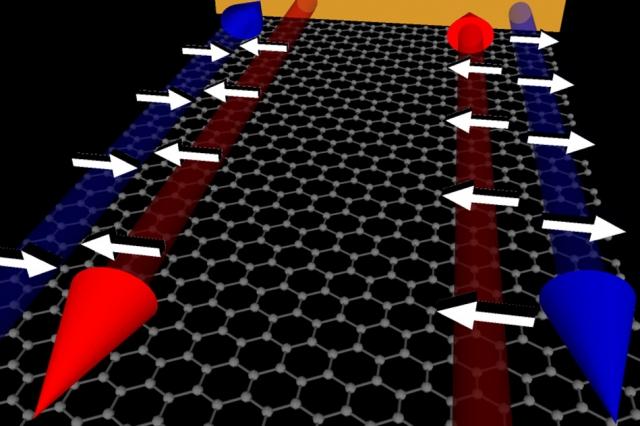
Quantum computing is a new paradigm in computing that utilizes the benefits of quantum mechanics to enhance the computing experience. Quantum computers will no longer rely on binary digits (0 and 1 states), that computers have relied on since the early beginnings, but will instead use quantum bits, which can be in a superposition of states. Quantum bits, or qubits, have the advantage of being in many states at once, offering parallel computing advantages. For example, they have long been regarded as far superior to classical computers for applications in data encryption.
Although the concept of quantum computers has been known for several decades, practical realizations are still lacking. The main limiting factor has been the critical influence of the environment on a qubit. Most physical systems need to be in perfectly controlled conditions in order to remain in the superposition state, whereas any interaction (mechanical, thermal, or other) with the environment perturbs this state and ruins the qubit. Such perturbation is termed “decoherence” that has plagued many potential qubit systems.
Graphene, having spurred research into numerous novel directions, is naturally also considered as a candidate material host for qubits. For example, back in 2013, a team of researchers from MIT found that graphene can be made into a topological insulator – meaning that electrons with one spin direction move around the graphene edges clockwise, whereas those that have the opposite spin move counterclockwise. They made this happen by applying two magnetic fields: one perpendicular to the graphene sheet, to make the electrons flow at sheet edges only, and another parallel to the sheet, that separates the two spin contributions. Electron spin has long been considered a candidate qubit, because it is inherently a quantum system that is in a superposition of states. In graphene, the spins move along the sheet edges robustly, without much decoherence. Furthermore, the same research showed switching the spin selection on and off, an important feature of q-bit transistors.
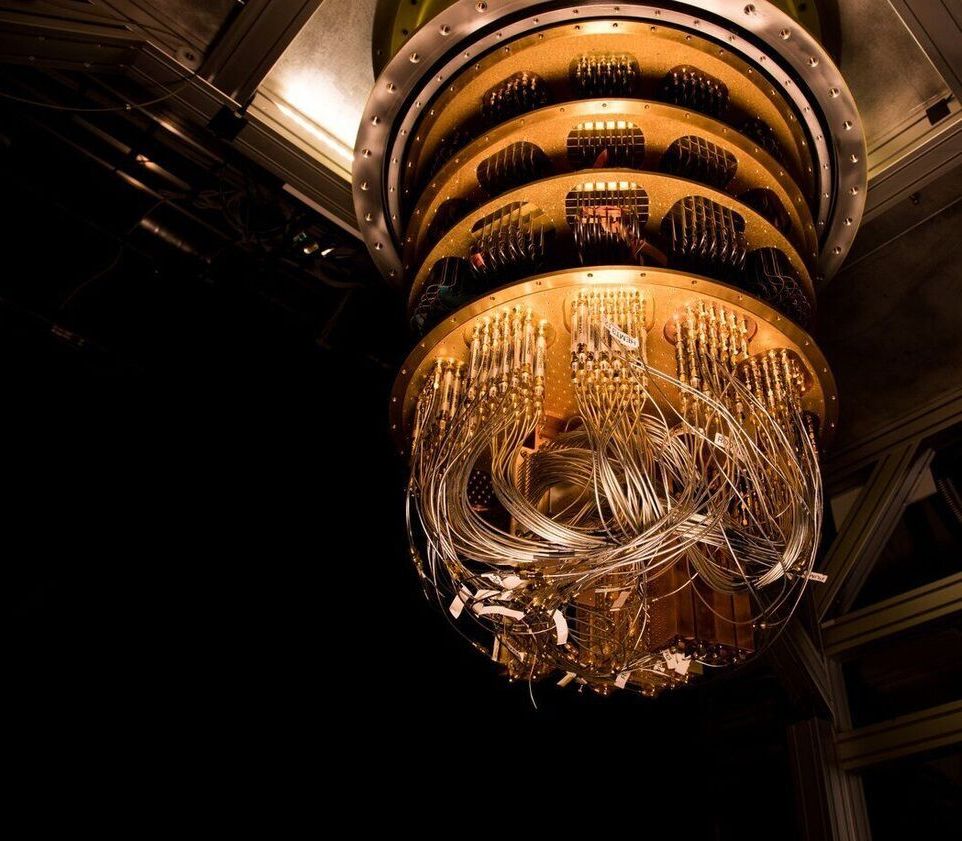
Researchers led by City College of New York physicist Pouyan Ghaemi report the development of a quantum algorithm with the potential to study a class of many-electron quantums system using quantum computers. Their paper, entitled “Creating and Manipulating a Laughlin-Type ν=1/3 Fractional Quantum Hall State on a Quantum Computer with Linear Depth Circuits,” appears in the December issue of PRX Quantum, a journal of the American Physical Society.
“Quantum physics is the fundamental theory of nature which leads to formation of molecules and the resulting matter around us,” said Ghaemi, assistant professor in CCNY’s Division of Science. “It is already known that when we have a macroscopic number of quantum particles, such as electrons in the metal, which interact with each other, novel phenomena such as superconductivity emerge.”
However, until now, according to Ghaemi, tools to study systems with large numbers of interacting quantum particles and their novel properties have been extremely limited.
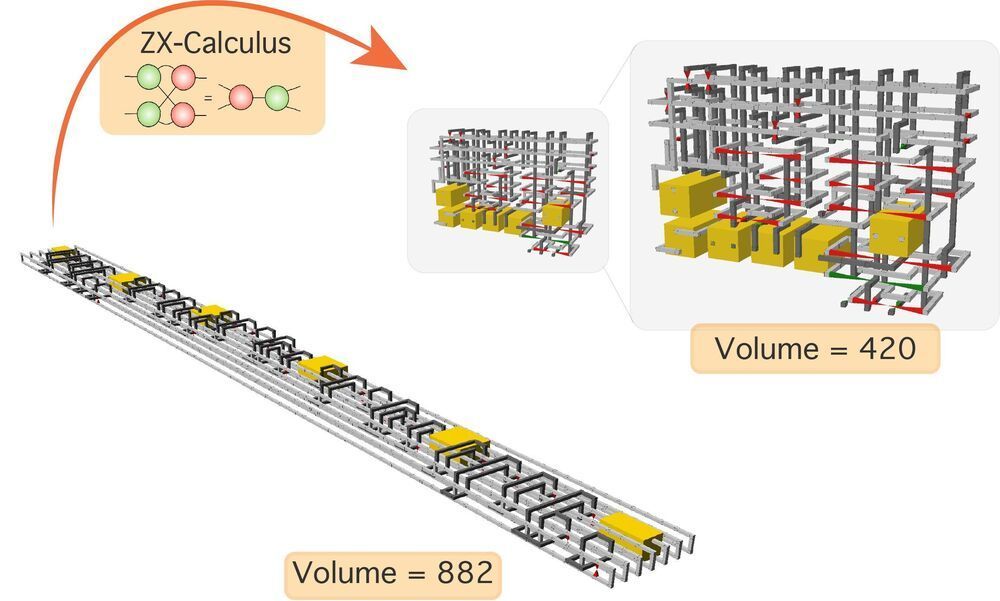
A major technical challenge for any practical, real-world quantum computer comes from the need for a large number of physical qubits to deal with errors that accumulate during computation. Such quantum error correction is resource-intensive and computationally time-consuming. But researchers have found an effective software method that enables significant compression of quantum circuits, relaxing the demands placed on hardware development.
Quantum computers may still be far from a commercial reality, but what is termed ‘quantum advantage’—the ability of a quantum computer to compute hundreds or thousands of times faster than a classical computer-has indeed been achieved on what are called Noisy Intermediate-Scale Quantum (NISQ) devices in early proof-of-principle experiments.
Unfortunately, NISQ devices are still prone to lots of errors that accumulate during their operation. For there to be any real-world application of quantum advantage, the design of a fully operational large-scale quantum computer with high error tolerance is required. Currently, NISQ devices can be engineered with approximately 100 qubits, but fault-tolerant computers would need millions of physical qubits at the very least to encode the logical information with sufficiently low error rates. A fault-tolerant implementation of quantum computational circuits not only makes the quantum computer larger, but also the runtime longer by orders of magnitude. An extended runtime itself in turn means the computation is even more susceptible to errors.
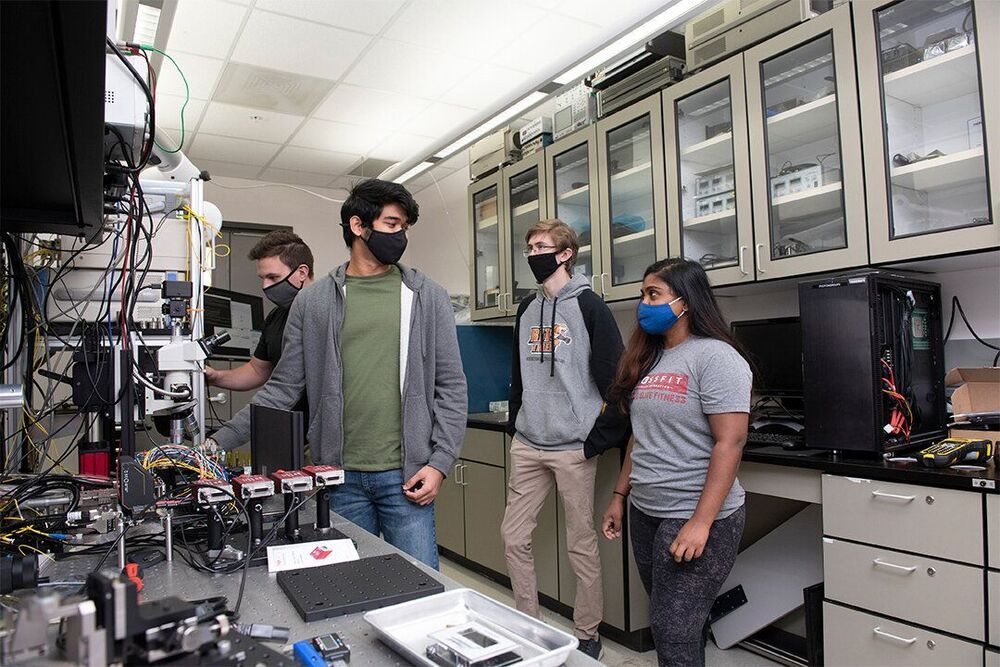
A new study outlines ways colleges and universities can update their curricula to prepare the workforce for a new wave of quantum technology jobs. Three researchers, including Rochester Institute of Technology Associate Professor Ben Zwickl, suggested steps that need to be taken in a new paper in Physical Review Physics Education Research after interviewing managers at more than 20 quantum technology companies across the U.S.
The study’s authors from University of Colorado Boulder and RIT set out to better understand the types of entry-level positions that exist in these companies and the educational pathways that might lead into those jobs. They found that while the companies still seek employees with traditional STEM degrees, they want the candidates to have a grasp of fundamental concepts in quantum information science and technology.
“For a lot of those roles, there’s this idea of being ‘quantum aware’ that’s highly desirable,” said Zwickl, a member of RIT’s Future Photon Initiative and Center for Advancing STEM Teaching, Learning and Evaluation. “The companies told us that many positions don’t need to have deep expertise, but students could really benefit from a one- or two-semester introductory sequence that teaches the foundational concepts, some of the hardware implementations, how the algorithms work, what a qubit is, and things like that. Then a graduate can bring in all the strength of a traditional STEM degree but can speak the language that the company is talking about.”

Sophomore math major Xzavier Herbert was never much into science fiction or the space program, but his skills in pure mathematics seem to keep drawing him into NASA’s orbit.
With an interest in representation theory, Herbert spent the summer virtually at NASA, studying connections between classical information theory and quantum information theory, each of which corresponds to a different set of laws: classical physics and quantum mechanics.
“What I’m doing involves how representation theory allows us to draw a direct analog from classical information theory to quantum information theory,” Herbert says. “It turns out that there is a mathematical way of justifying how these are related.”

While researchers have conducted countless studies exploring the interaction between light waves and bound electron systems, the quantum interactions between free electrons and light have only recently become a topic of interest within the physics community. The observation of free electron-light interactions was facilitated by the discovery of a technique known as photon-induced near-field electron microscopy (PINEM).
Although some experiments using PINEM methods have yielded interesting results, the free-electron light interactions observed so far are fairly weak. This is mainly because PINEM methods gather localized and near-field measurements without addressing the velocity mismatch between free electrons and light, which is known to limit the strength of their interaction.
Researchers at Technion–Israel Institute of Technology have recently observed a strong interaction between free electron waves and light waves, using a hybrid electron microscope they developed. Their observation of coherent electron phase matching, which is also a type of inverse-Cherenkov interaction, demonstrates how the nature of electron wavefunctions can alter electron-light interactions.
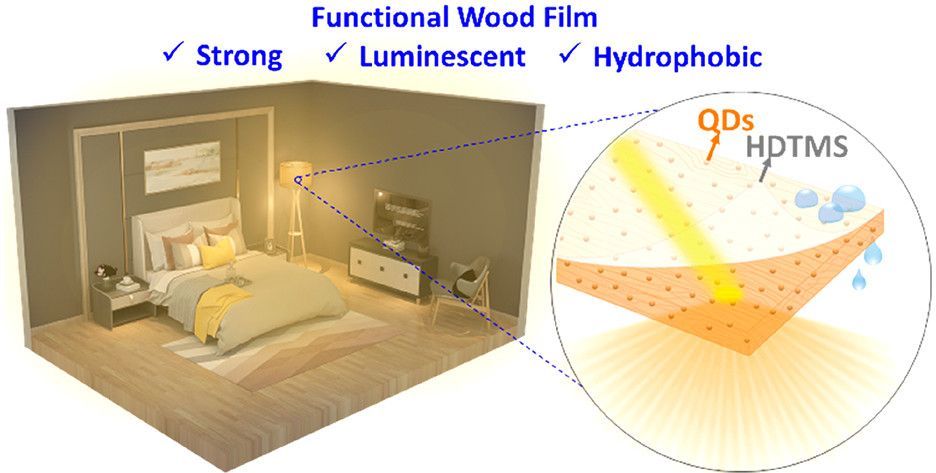
Most materials used for optical lighting applications need to produce a uniform illumination and require high mechanical and hydrophobic properties. However, they are rarely eco-friendly. Herein, a bio-based, polymer matrix-free, luminescent, and hydrophobic film with excellent mechanical properties for optical lighting purposes is demonstrated. A template is prepared by turning a wood veneer into porous scaffold from which most of the lignin and half of the hemicelluloses are removed. The infiltration of quantum dots (CdSe/ZnS) into the porous template prior to densification resulted in almost uniform luminescence (isotropic light scattering) and could be extended to various quantum dot particles, generating different light colors. In a subsequent step, the luminescent wood film is coated with hexadecyltrimethoxysilane (HDTMS) via chemical vapor deposition. The presence of the quantum dots coupled with the HDTMS coating renders the film hydrophobic (water contact angle ≈ 140°). This top-down process strongly eliminates lumen cavities and preserves the orientation of the original cellulose fibrils to create luminescent and polymer matrix-free films with high modulus and strength in the direction of fibers. The proposed optical lighting material could be attractive for interior designs (e.g., lamps and laminated cover panels), photonics, and laser devices.

Three-dimensional (3D) nanostructured materials—those with complex shapes at a size scale of billionths of a meter—that can conduct electricity without resistance could be used in a range of quantum devices. For example, such 3D superconducting nanostructures could find application in signal amplifiers to enhance the speed and accuracy of quantum computers and ultrasensitive magnetic field sensors for medical imaging and subsurface geology mapping. However, traditional fabrication tools such as lithography have been limited to 1-D and 2-D nanostructures like superconducting wires and thin films.
Now, scientists from the U.S. Department of Energy’s (DOE) Brookhaven National Laboratory, Columbia University, and Bar-Ilan University in Israel have developed a platform for making 3D superconducting nano-architectures with a prescribed organization. As reported in the Nov. 10 issue of Nature Communications, this platform is based on the self-assembly of DNA into desired 3D shapes at the nanoscale. In DNA self-assembly, a single long strand of DNA is folded by shorter complementary “staple” strands at specific locations—similar to origami, the Japanese art of paper folding.
“Because of its structural programmability, DNA can provide an assembly platform for building designed nanostructures,” said co-corresponding author Oleg Gang, leader of the Soft and Bio Nanomaterials Group at Brookhaven Lab’s Center for Functional Nanomaterials (CFN) and a professor of chemical engineering and of applied physics and materials science at Columbia Engineering. “However, the fragility of DNA makes it seem unsuitable for functional device fabrication and nanomanufacturing that requires inorganic materials. In this study, we showed how DNA can serve as a scaffold for building 3D nanoscale architectures that can be fully “converted” into inorganic materials like superconductors.”